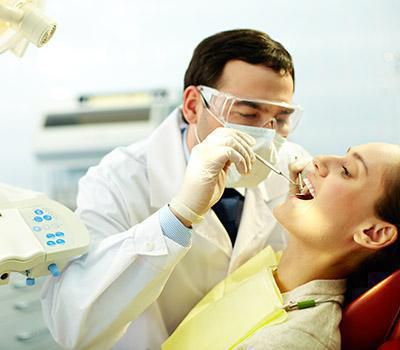Laser Therapy
LASER
The word laser is an acronym for light amplification by stimulated emission of radiation. Laser light has four types of interactions with the target tissue which depends on the optical properties of that tissue: Absorption, transmission of laser energy, reflection, a scattering of the laser light.
Uses of lasers in dentistry are as follows:
1.For hard tissue
- Lasers for caries detection: When the laser irradiates the tooth, the light is absorbed by organic and inorganic substances present in the dental tissues, as well as by metabolites such as bacterial porphyrins. These porphyrins show some fluorescence after excitation by red light. Since bacteria are present in the carious lesions, carious tissue exhibits more fluorescence as compared to the healthy tissue which distinguishes between the carious and sound tooth structure. It can detect occlusal, interproximal carious lesion or identify occult lesions beneath fissure sealants. Although the procedure is considered to be safe, further studies are required for explorations the beneficial effects of this innovative technology.
- Lasers for caries removal: The Er: YAG lasers are proven to be safe and effective for caries removal and cavity preparation in pediatric and adults patients without significant damage to the tooth structure or patient discomfort.
- Lasers used for calculus removal: The Er: YAG laser is used for calculus removal as the bacterial porphyrins in dental calculus give a strong fluorescence signal, which can be used to control lasers used for scaling. These lasers are effective in removing lipopolysaccharides and other root surface endotoxins and are highly bactericidal against certain periodontal pathogens.
- Laser-assisted bleaching: The objective of laser bleaching is to achieve the ultimate power bleaching process using the most efficient energy source while avoiding any adverse effects.
- Surgical procedures: Many different laser wavelengths have been used in oral and maxillofacial surgery. Since there is an excellent absorption of the CO2 laser at a wavelength of 10,600 nm in the water-based tissues, it is widely indicated in oral surgical procedures performed intraorally and extraorally.
2.For soft tissue
- Laser curettage: Both the Nd: YAG and diode lasers are indicated for curettage. Laser-assisted curettage significantly improves outcomes in mild to moderate periodontitis. The treatment is not invasive and comfortable to the patients.
- Laser-assisted incisional and excisional biopsy: These procedures are accomplished at 100°C. The lasers are placed in cutting or focused mode, held perpendicular to the tissue and follow the surgical outline. When laser light interacts with the soft tissue, there is vaporization of intra and extracellular water content resulting in ablation or removal of biological tissue.
- Photodynamic therapy: A more powerful laser-initiated photochemical reaction is photodynamic therapy (PDT), which has been employed in the treatment of malignancies of the oral mucosa, particularly multifocal squamous cell carcinoma.
3.Lasers in pediatric dentistry
Treatment with lasers is beneficial when used in children as there is the precise and selective interaction of lasers with the soft tissue. All procedures previously discussed are treated in the same manner in the Pediatric population as well.
The use of laser technology has been widely used in dentistry. When used efficaciously and ethically, lasers have been an essential tool in many dental treatments.




